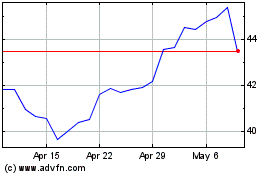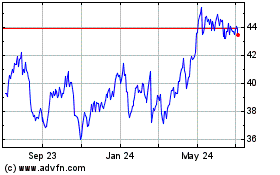HSBC’s Global Value of Education Report found
that US Parents Spend on average more than $58,000 on their
Children’s Education from Primary School through College
US parents have high aspirations for their children, with more
than 84% parents expressing confidence that their child will have a
bright future. In fact, HSBC’s global Value of Education report
found 87% of parents confirmed that they are ready to make personal
sacrifices so that their children can succeed. To support their
child’s education, nearly a quarter of parents (24%) have forfeited
‘me time’ and 17% have either drastically reduced or completely
stopped leisure activities or holidays.
This Smart News Release features multimedia.
View the full release here:
http://www.businesswire.com/news/home/20170912006279/en/
It’s clear that parents see their children’s education as an
essential investment in their future, but it can be costly. US
parents are spending an average of $58,464 on their child’s
education from primary school through undergraduate university
level. This is much steeper than the overall global average of
$44,221, based on the fifteen countries surveyed as part of this
research. Even with these steep costs American parents do not top
the list. For example, in Hong Kong, parents are spending an
average of $132,161 for their child’s education, roughly 126% more
than US parents are spending.
“Parents are willing to go to great lengths to help their
children get the best possible start in life,” said Pablo Sanchez,
HSBC’s Head of Retail Banking and Wealth Management for the US and
Canada. “They understand that education is paramount in today’s
highly competitive job market, and are willing to make personal,
lifestyle and financial sacrifices to ensure their child receives
the education necessary that will set them up for success in the
future.”
In order to pay for education, many US parents are making or
have made financial sacrifices including reducing their spend on
leisure activities (30%), working longer hours in their existing
job (20%), contributing less to their own long-term savings or
investments (18%) and taking on a job/second job (14%) to help fund
their child’s education.
In the US, most parents are helping to fund their child’s
current stage of education, with 84% contributing towards their
child’s elementary school education, 76% towards high school and
73% towards college or university education. While parents are
willing to support their children many are not planning ahead for
the significant education costs. Three-fifths of US parents (60%)
are using their day-to-day income, while 34% are using general
savings, investments or insurance and even fewer parents (24%) are
funding their child’s education through a specific education
savings or investment plan.
Additionally, in the US two in five parents wish they had
started saving earlier, while 35% wish they had put more money
aside for their child’s education, and 15% wish they had taken
professional financial advice.
“It’s easy to underestimate the full and long-term costs of
educating a child, so it’s important for parents to start planning
early, to be realistic about costs and to prepare for the long
term,” added Michael Boardman, HSBC’s US Head of Wealth Management.
“Doing so will help to reduce the strain that education can have on
family finances. Seeking professional advice can help parents make
more informed choices and develop a longer term financial
plan.”
Additional Findings
Digital Learning: The majority (87%) of US parents are
aware of online degree programs and 67% say they would consider a
university degree for their child that is either completely online
or incorporates some online courses/modules, with a third (33%)
saying they would consider a degree that is completely online. In
contrast, 73% of parents surveyed worldwide are aware of online
degrees, and 60% would consider a degree that is completely or
partly online.
Studying Abroad an Essential Experience: In today’s
globalized world, a university education in a different country is
a real option, with 36% of US parents saying they would consider a
university education abroad for their child. And, of parents who
would consider university education abroad for their child, the UK
is their most popular choice: 37% would consider sending their
child to a UK university, with France and Canada tied as the second
most popular choices at 36%.
The US is a Top Destination: Of parents who would
consider sending their children abroad for a university education,
many have a preferred country in mind where they would like their
child to study. The US is the most popular choice overall for
parents outside of the US. Nearly half (47%) of these parents would
consider sending their child to university in the USA, and it is
the most favored destination for parents in Taiwan (70%), China
(61%) and Canada (61%). Australia (40%) is the second most popular
choice and the UK (39%) is the third most popular choice.
Notes to Editors:
Spending on Education (methodology)
To calculate spending on education, parents who are currently
contributing to funding any aspects (e.g. school/university fees,
educational books, transport, accommodation) of their child’s
primary, secondary and tertiary education (up to undergraduate
level) were asked approximately how much they contribute each
year.
The average yearly amount spent by parents on each stage of
education in each country was multiplied by the typical length of
each educational stage in that country, to derive the total amount
spent on a child’s education.
The exchange rates used are based on the NZForex 2016 average
yearly rate.
About This Report
The Value of Education is an independent consumer research study
into global education trends, commissioned by HSBC. Higher and
higher, the fourth report in the series, was published in June 2017
and represents the views of 8,481 parents in 15 countries and
territories around the world: Australia, Canada, China, Egypt,
France, Hong Kong, India, Indonesia, Malaysia, Mexico, Singapore,
Taiwan, UAE, UK and USA.
The findings are based on a sample of parents with at least
one child aged 23 or younger currently (or soon to be) in
education, drawn from nationally representative online panels in
each country or territory. At least 500 parents (including 150 with
a child at university or college), were surveyed in all countries.
In the UK, 1,001 parents (including 202 with a child at university
or college) were surveyed. In China, 946 parents (including 504
from the Pearl River Delta region) were surveyed.
The research was conducted online by Ipsos MORI in February
2017, with interviews in Egypt conducted face-to-face.
To view the full report, go here.
HSBC Bank USA, National Association (HSBC Bank USA,
N.A.), with total assets of US$191.9bn as of 30 June 2017 (US
GAAP), serves customers through retail banking and wealth
management, commercial banking, private banking, asset management,
and global banking and markets segments. It operates 229 bank
branches throughout the United States. There are 146 in New York as
well as branches in: California; Connecticut; Delaware; Washington,
D.C.; Florida; Maryland; New Jersey; Pennsylvania; Virginia; and
Washington. HSBC Bank USA, N.A. is the principal subsidiary of HSBC
USA Inc., a wholly-owned subsidiary of HSBC North America Holdings
Inc. HSBC Bank USA, N.A. is a Member of the FDIC.
HSBC Holding plc, the parent company of HSBC, is
headquartered in London. HSBC serves customers worldwide from
approximately 4,000 offices in 70 countries and territories in our
geographical regions: Europe, Asia, North America, Latin America,
and Middle East and North Africa. With assets of $2,416bn at 31
March 2017, HSBC is one of the world’s largest banking and
financial services organizations.
View source
version on businesswire.com: http://www.businesswire.com/news/home/20170912006279/en/
Media:HSBCMatt Klein,
212-525-4644matt.klein@us.hsbc.comorSteve Goewey,
212-525-5677stephen.x.goewey@us.hsbc.com
HSBC (NYSE:HSBC)
Historical Stock Chart
From Mar 2024 to Apr 2024

HSBC (NYSE:HSBC)
Historical Stock Chart
From Apr 2023 to Apr 2024
